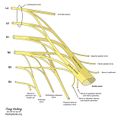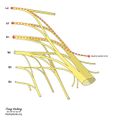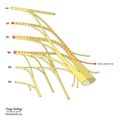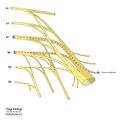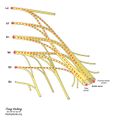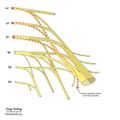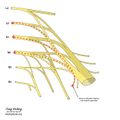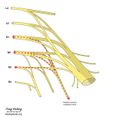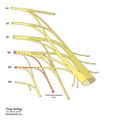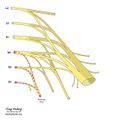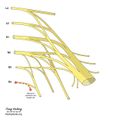◔
Gluteus Maximus: Difference between revisions
From WikiMSK
No edit summary |
No edit summary |
||
| Line 8: | Line 8: | ||
|action=External rotation and extension of the hip joint, supports the extended knee through the iliotibial tract, chief antigravity muscle in sitting and abduction of the hip | |action=External rotation and extension of the hip joint, supports the extended knee through the iliotibial tract, chief antigravity muscle in sitting and abduction of the hip | ||
|synergists= | |synergists= | ||
|antagonists=Iliacus, | |antagonists=Iliacus, Psoas Major, Psoas Minor | ||
|nerve supply=Inferior gluteal nerve (L5, S1 and S2 nerve roots) | |nerve supply=Inferior gluteal nerve (L5, S1 and S2 nerve roots) | ||
|blood supply= Superior and inferior gluteal arteries | |blood supply= Superior and inferior gluteal arteries | ||
Revision as of 17:26, 4 April 2022
This article is a stub.
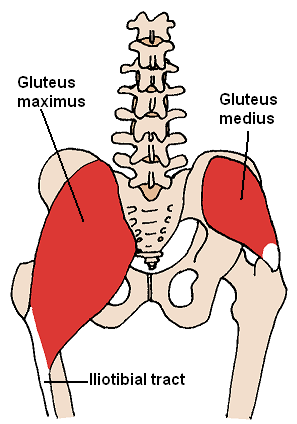
| |
| Gluteus Maximus | |
|---|---|
| Muscle Type | |
| Origin | Gluteal surface of ilium, lumbar fascia, sacrum, sacrotuberous ligament |
| Insertion | Greater trochanter of the femur and iliotibial tract |
| Action | External rotation and extension of the hip joint, supports the extended knee through the iliotibial tract, chief antigravity muscle in sitting and abduction of the hip |
| Synergists | |
| Antagonists | Iliacus, Psoas Major, Psoas Minor |
| Spinal innervation | |
| Peripheral Innervation | |
| Vasculature | Superior and inferior gluteal arteries |
The gluteus maximus muscle is the largest and most superficial of the three gluteal muscles. During the normal gait, the hamstrings provide most hip extension rather than the gluteus maximus.
Gluteus Maximus Lurch
Normally the gluteus maximus contracts at the point of heel strike, arresting hip flexion, and thereby slowing forward motion of the trunk. A weakened gluteus maximus causes a backwards lurch (trunk extension) at heel strike on the weakened side, interrupting the forward motion of the trunk. This compensates for the weakness of hip extension.
